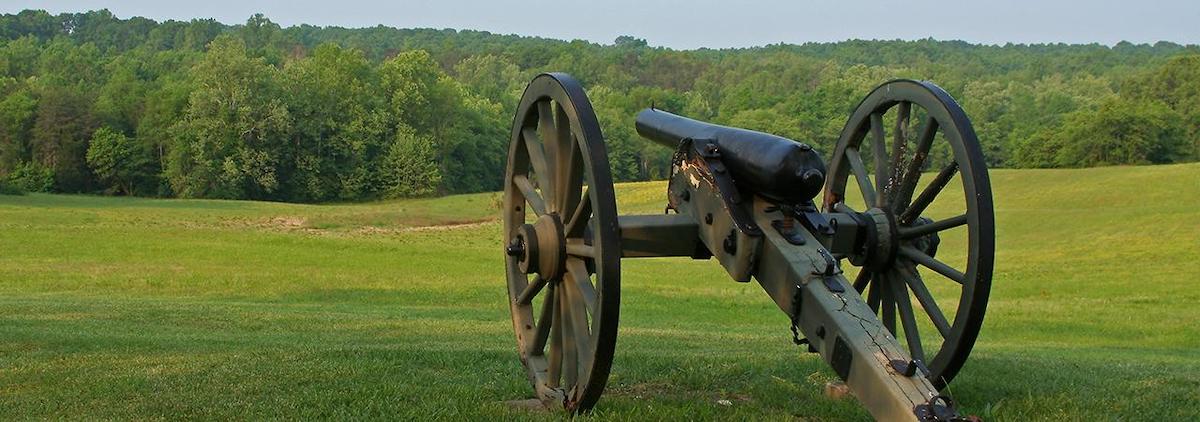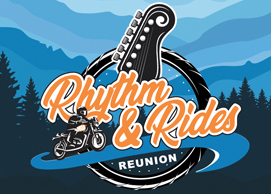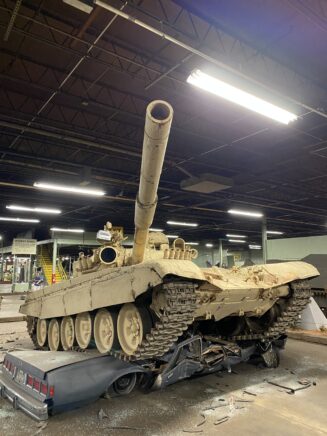Saying I'm excited the members of the MOA are coming to my home state—my home city to boot!—is understating the fact by quite a bit. I'm looking forward to the day when my local roads are choked with BMW motorcycles and the chances of me knowing the riders (or at least knowing who they are) is high.
Between now and the Rally in June, I'm going to tell you about some of the most interesting places to visit in Virginia. My hope is you'll plan your ride away from the interstate freeways and take the opportunity of The 50th to explore Virginia at your leisure. Virginia is unique in that two of the three major wars which took place in the USA ended in the state, the American Revolution and the US Civil War. We'll kick off the series with this list of 10 military history sites to visit on your way to or from the Rally, or even as a day trip while you're at The 50th.
The National D-Day Memorial. We all know the D-Day took place on the beaches of Normandy in France on 6 June 1944 and featured the largest amphibious invasion in history. Tens of thousands of Allied troops threw themselves out of airplanes or onto the beachheads to initiate the final defeat of Nazi Germany, and there are cemeteries and monuments across Normandy to commemorate the event and memorialize the foreign soldiers who gave their lives for France's freedom. Bedford, Virginia, is home to the National D-Day Memorial, where the soldiers who participated and died are memorialized in a moving life-size display. Tickets are required (see dday.org). The D-Day Memorial is located halfway between Roanoke and Lynchburg, about 160 miles west-southwest of the Rally site. Set your GPS for 3 Overlord Circle, Bedford, 24523.
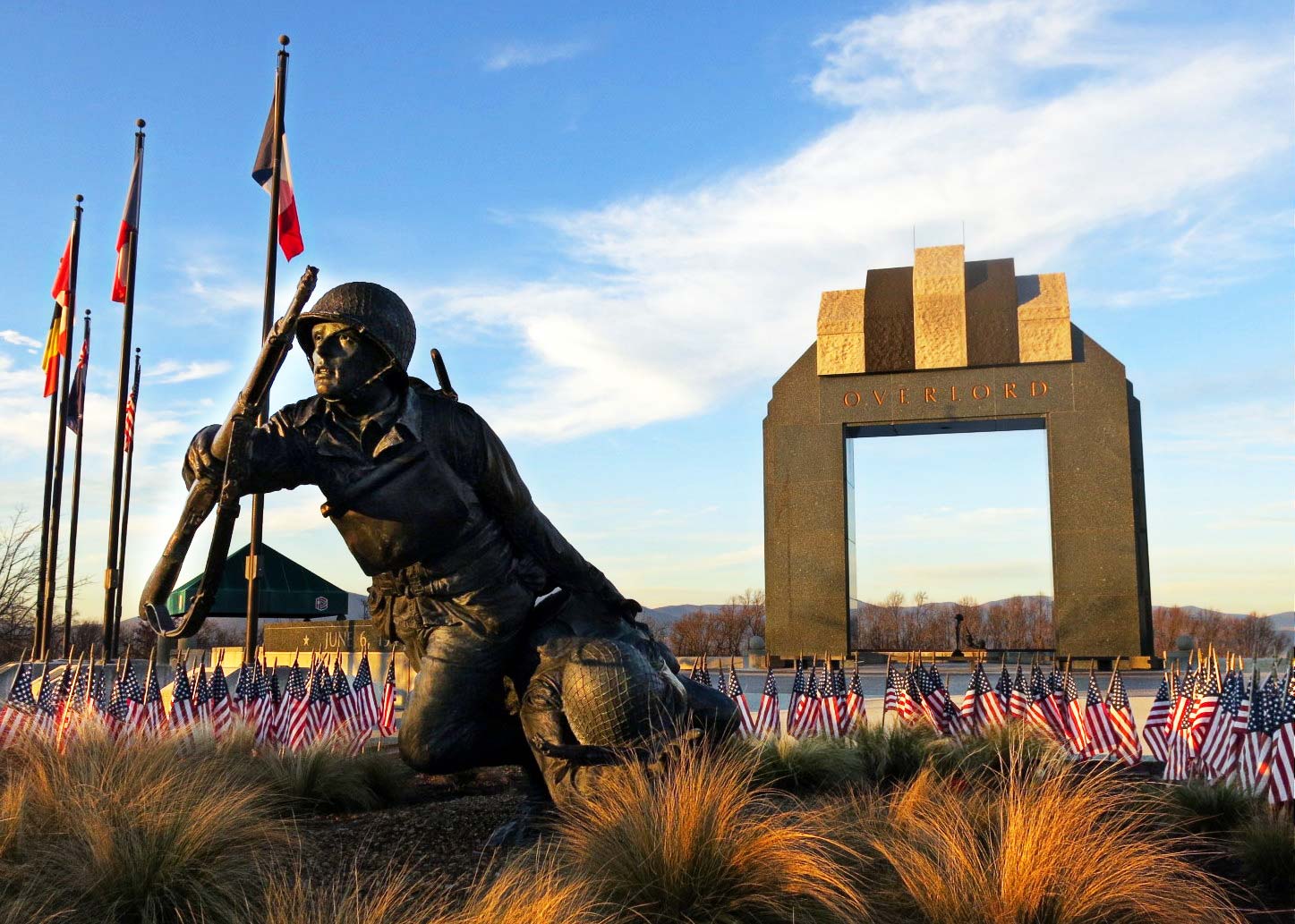
Yorktown Battlefield. The American Revolution ended after the Battle of Yorktown. The battle—really a siege lasting about three weeks—saw the upstart Continental Army (with French reinforcements) trap a 25% larger British force in the waterfront village of Yorktown, not far from the colonists' first permanent settlement at Jamestown. Unable to escape by sea thanks to the presence of the French navy, General Cornwallis and his Redcoats held out valiantly against the entrenched and organized colonial force until 19 October 1781, when they surrendered to George Washington and ended the British holdout against American independence. Be sure to visit the nearby American Revolution Museum (200 Water St, Yorktown, 23690). Make a whole day of it by also visiting the Jamestown Settlement (2110 Jamestown Rd, Williamsburg, 23185), the site of the first successful English colony in the New World. Yorktown Battlefield is part of Colonial National Historical Park and lies about 80 miles southeast of the Rally site; set your GPS for 1000 Colonial Nat'l Historical Pkwy, Yorktown, 23690.
Appomattox Court House National Historical Park. The Civil War effectively ended after an eight-day battle—on 9 April 1965—when Robert E. Lee surrendered his Army of Northern Virginia to future U.S. president Ulysses S. Grant in the McLean House in the village of Appomattox Court House. The park is a living museum featuring buildings restored to how they would have looked in the 19th century and is about 110 miles southwest of the Rally site. The town's American Civil War Museum is just beyond the southern entrance to the park. As Appomattox is not accessible from an interstate freeway, be prepared to ride along some of Virginia's prettiest US and state highways. Set your GPS for 111 National Park Dr, Appomattox, 24522.
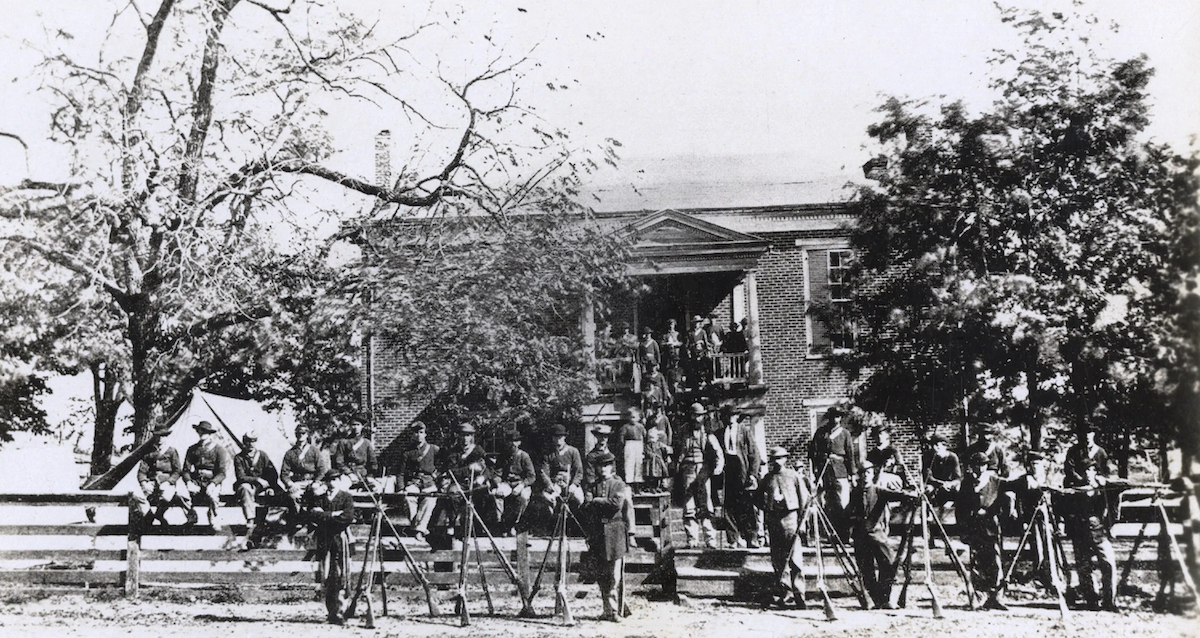
Richmond National Battlefield Park. To finalize the defeat of the Confederate army, the Federal forces had to conquer Richmond, the capital of the Confederacy. This park covers a wide area and is split into multiple locations, all connected by their importance to the sprawling Battle of Richmond. Richmond itself is but a hop, skip and a jump south of the Rally site, so visit these places on your way in or your way out and still have plenty of day left to put down miles towards your eventual destination. The visitor centers are closed on Mondays and Tuesdays, but the parks themselves are open. Set your GPS for the Chimborazo Medical Museum (3215 E Broad St, Richmond, 23223), Tredegar Iron Works (500 Tredegar St, Richmond, 23219; there is a charge for parking unless you pay for admission to the American Civil War Museum or have a National Park Service pass) and Fort Harrison (8621 Battlefield Park Rd, Richmond, 23231). Nearby Mechanicsville is home to the battlefields of Cold Harbor (5515 Anderson Wright Dr, Mechanicsville, 23111) and Gaines' Mill (6283 Watt House Rd, Mechanicsville, 23111).
Fredericksburg & Spotsylvania National Military Park. Encompassing four major battle sites—Fredericksburg, Spotsylvania, Chancellorsville and Wilderness—this park gives an overview of some of the harshest battles late in the Civil War. As a point of trivia, an MOA member and Iron Butt Rally finisher was once the head ranger here! The park's battlefields are roughly due north from the Rally site, between 35 and 50 miles away. Be sure to visit all four battlefields: Fredericksburg (1013 Lafayette Blvd, Fredericksburg, 22401), Spotsylvania (9550 Grant Dr, Spotsylvania Courthouse, 22553), Chancellorsville (9001 Plank Rd, Spotsylvania Courthouse, 22553) and Wilderness (35347 Constitution Hwy, Orange, 22160). If you have time, ride out to where Thomas "Stonewall" Jackson's arm was buried at 36380 Constitution Hwy, Locust Grove, 22508.
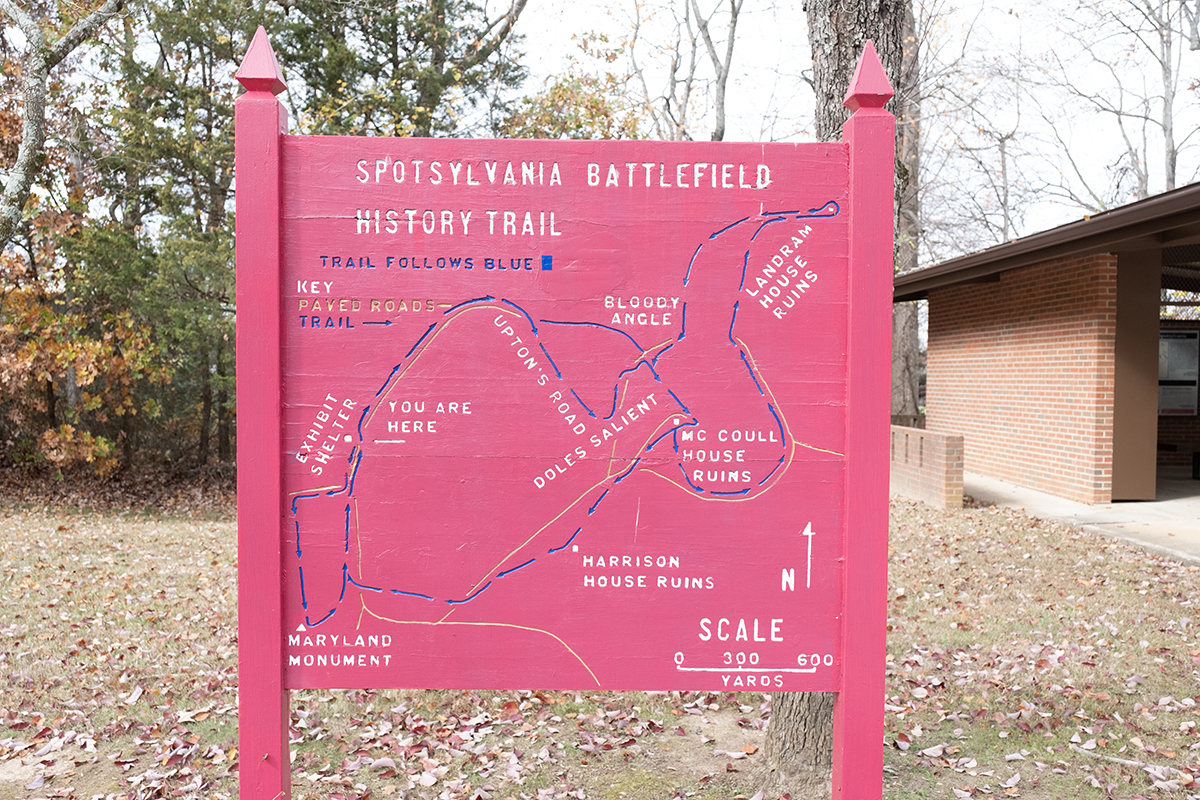
Petersburg National Battlefield. The siege of Petersburg, laid by the Federal army, managed to cut off the supply lines for Robert E. Lee's Confederate army, setting the stage for the final battle of the Civil War and Lee's surrender at Appomattox. Both sides suffered a combined casualty count topping 70,000 during the nine-month siege, a staggering toll that all but sealed the Confederates' fate. Petersburg was also the site of a critical battle during the American Revolution; though that battlefield is near this park, it does not have its own park. Located 50-70 miles south of the Rally site, you can easily visit all of the four principal locations and make it back to the Rally in time for the evening entertainment. Set your GPS to find the Eastern Front Visitor Center (5001 Siege Rd, Prince George, 23875), Grant's Headquarters (1001 Pecan Ave, Hopewell, 23860; this site overlooks the beautiful Appomattox River), Poplar Grove National Cemetery (8005 Vaughan Rd, Petersburg, 23805) and the Five Forks Battlefield (9840 Courthouse Rd, Dinwiddie, 23841).
Manassas National Battlefield Park. Not one, but two significant Civil War battles took place at Bull Run, first in July 1861 and again in August 1862. Both times, the Confederate army emerged victorious, and after the Second Battle of Bull Run, leaders on both sides realized the war would be neither short nor glamorous. For an immersive, visceral experience while you're in the area, visit the Ben Lomond Historical Site, a tobacco plantation turned into a wartime hospital, at 10321 Sudley Manor Dr in Manassas. Manassas National Battlefield Park encompasses over 5,000 acres and includes both hiking and driving trails and lies about 80 miles north of the Rally site; it's perfectly situated for a visit if you're coming to the Rally from the north, as you'll likely want to swing west around the D.C. area anyway. Set your GPS for 6511 Sudley Rd, Manassas, 20109.
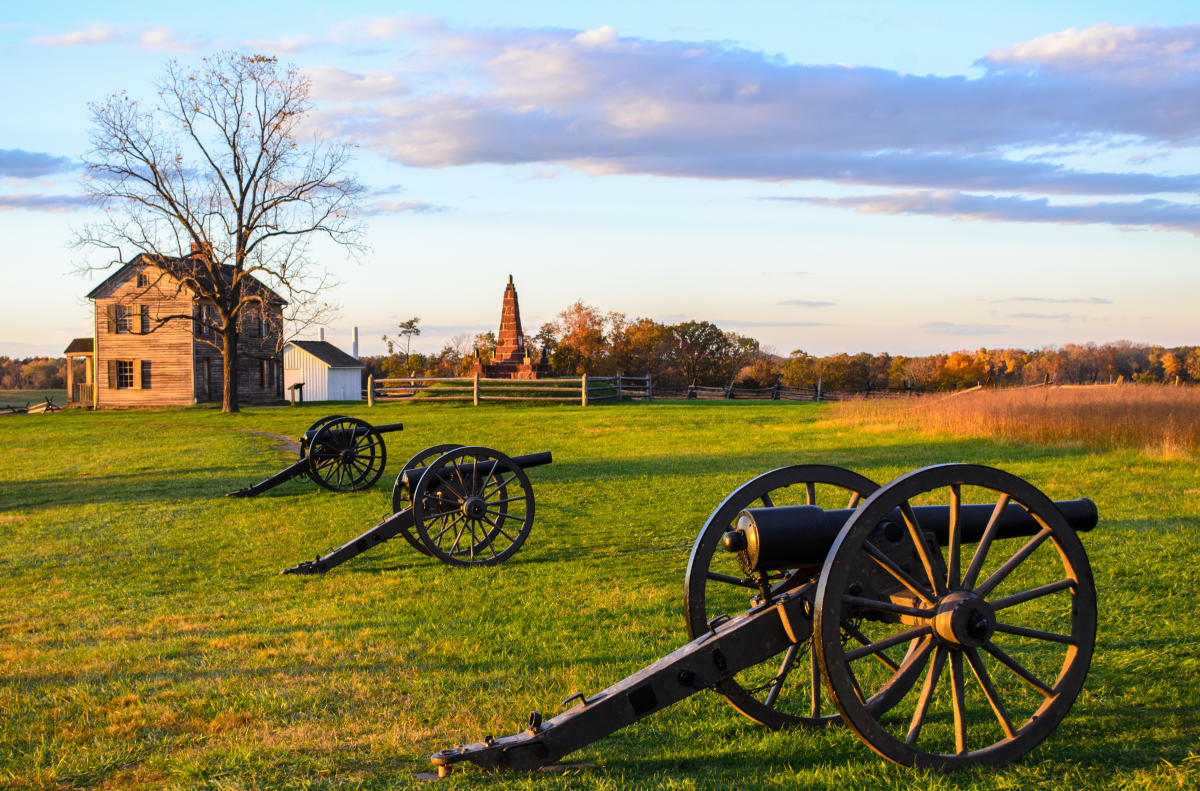
Bristoe Station Battlefield Heritage Park. Located not far from Manassas National Battlefield Park is the Bristoe Station Battlefield, a park run by Prince William County. The first action here was the Battle of Kettle Run in August 1862. The October 1863 Battle of Bristoe Station saw the Federal army—led by George Meade—defeated once again early in the war, this time by Confederate tactician Robert E. Lee. The only upside for the Federals was losing only about a third of the troops the Confederates did, so they considered it a marginal victory despite being forced to retreat. The park is about 70 miles north of the Rally site; set your GPS for 11619 Iron Brigade Unit Ave, Bristow, 20136 and go around the traffic circle onto Tenth Alabama Way to enter the park.
Ball's Bluff Battlefield Regional Park. This is a state park marking the site of one of the largest battles close to the capital region. Fought not long after the first Battle of Bull Run, the Battle of Ball's Bluff saw Federal general George McClellan soundly defeated after he sent the Army of the Potomac to attack a Confederate fort he mistakenly thought was undermanned. There are guided tours on the weekends, but self-guided tours are available any time; the site includes a national cemetery as well. The park is accessed via VA 7, which at the time was a major road west from the D.C. region known as the Alexandria-Winchester Turnpike. Ball's Bluff is about 115 miles north of the Rally site; set your GPS for Balls Bluff Rd NE, Leesburg, 20176.
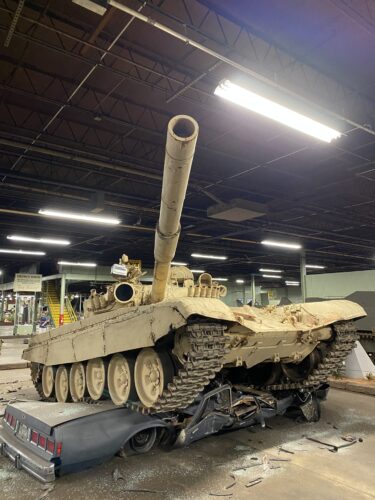
Sailor's Creek Battlefield State Park. Taking place across over 300 acres of beautiful Virginia countryside, Sailor's Creek was an unqualified victory for the Federal army, one in which Grant's army captured more than 7,500 Confederate troops, eight of their generals, and cut off both the Confederate army's retreat and their supply lines. Lee would surrender at Appomattox less than a week after the end of this April 1865 battle. The park is east of Appomattox, about 80 miles from the Rally site. Set your GPS for 6541 Sayler's Creek Rd, Rice, 23966.
For more military history in Virginia, visit the following: Arlington National Cemetery and the nearby U.S. Marine Corps Memorial, the U.S. Air Force Memorial near the Pentagon, National Museum of the Marine Corps in Triangle, Military Aviation Museum in Virginia Beach, Virginia War Museum in Newport News, Hampton Roads Naval Museum, Old Guard Museum at Fort Myer, and especially the American Armor Foundation's Tank Museum in Danville, one of my favorite places ever. There are three museums in the state dedicated to the U.S. Army: the Transportation Museum at Fort Eustis, and the Quartermaster Museum and Women's Museum at Fort Lee. Addresses, days/hours of operation and entrance fees are available with a quick Google search. Note that some of these museums are on military installations and might require extra time to access.
